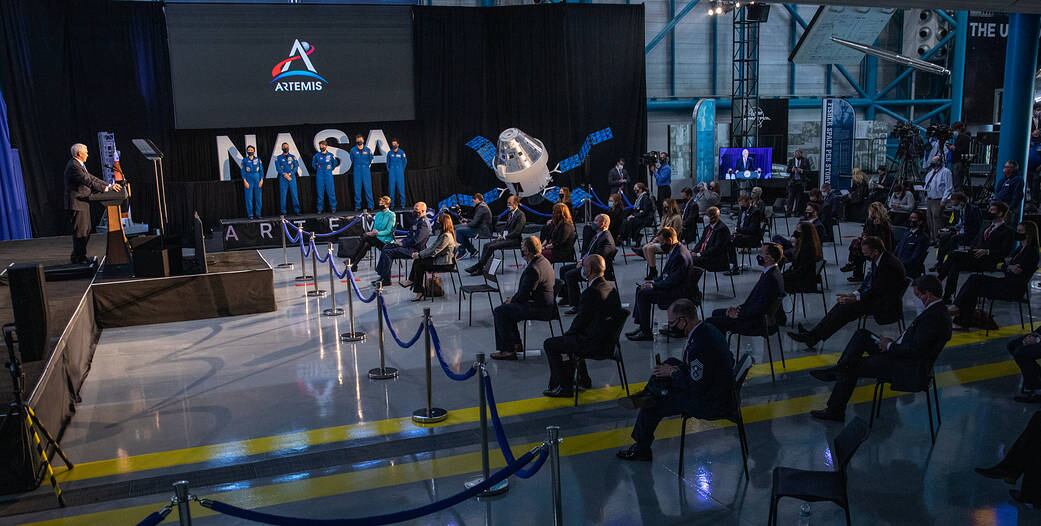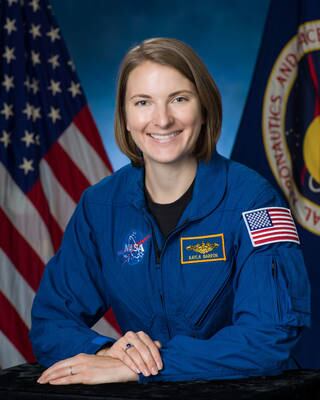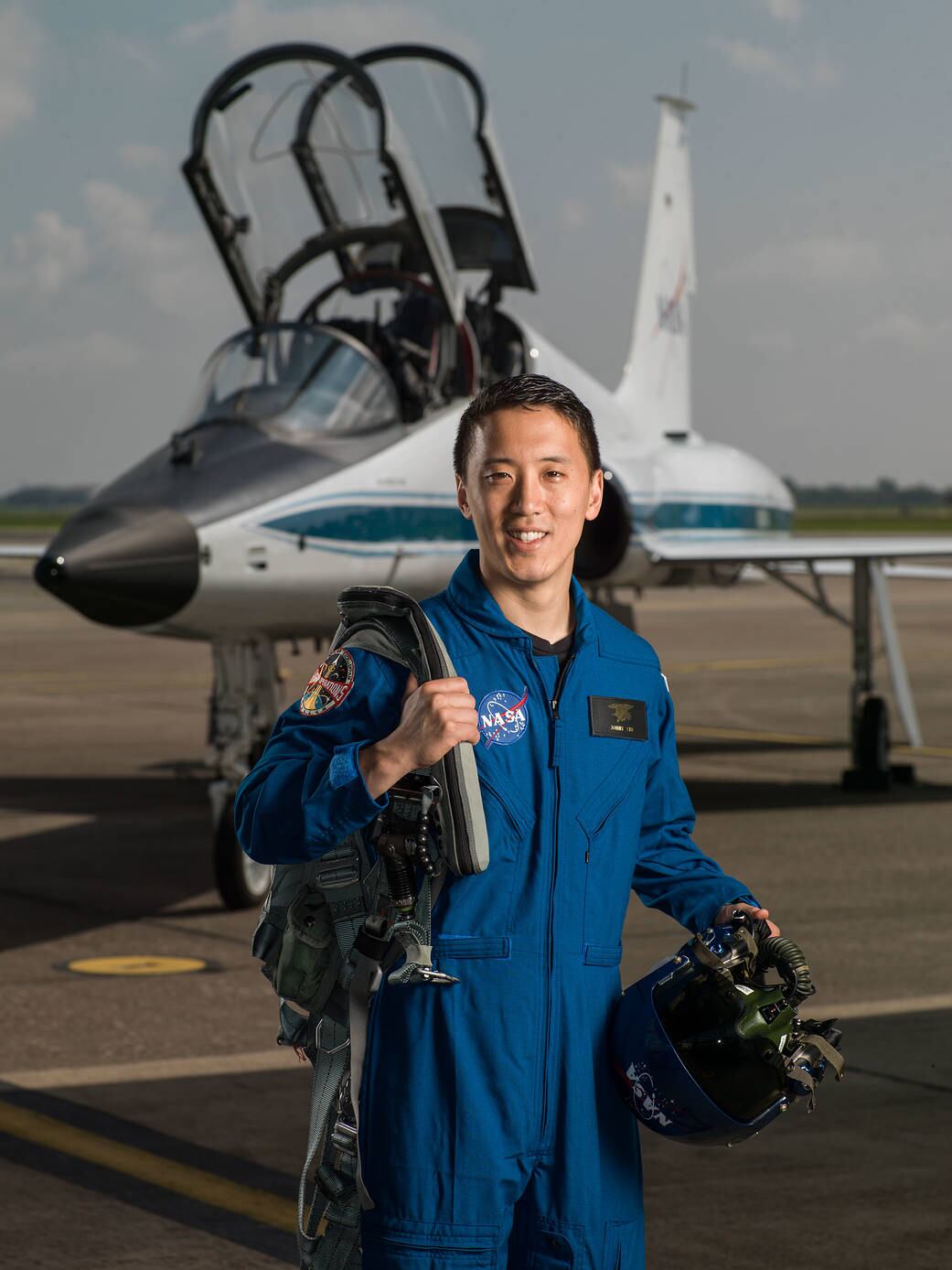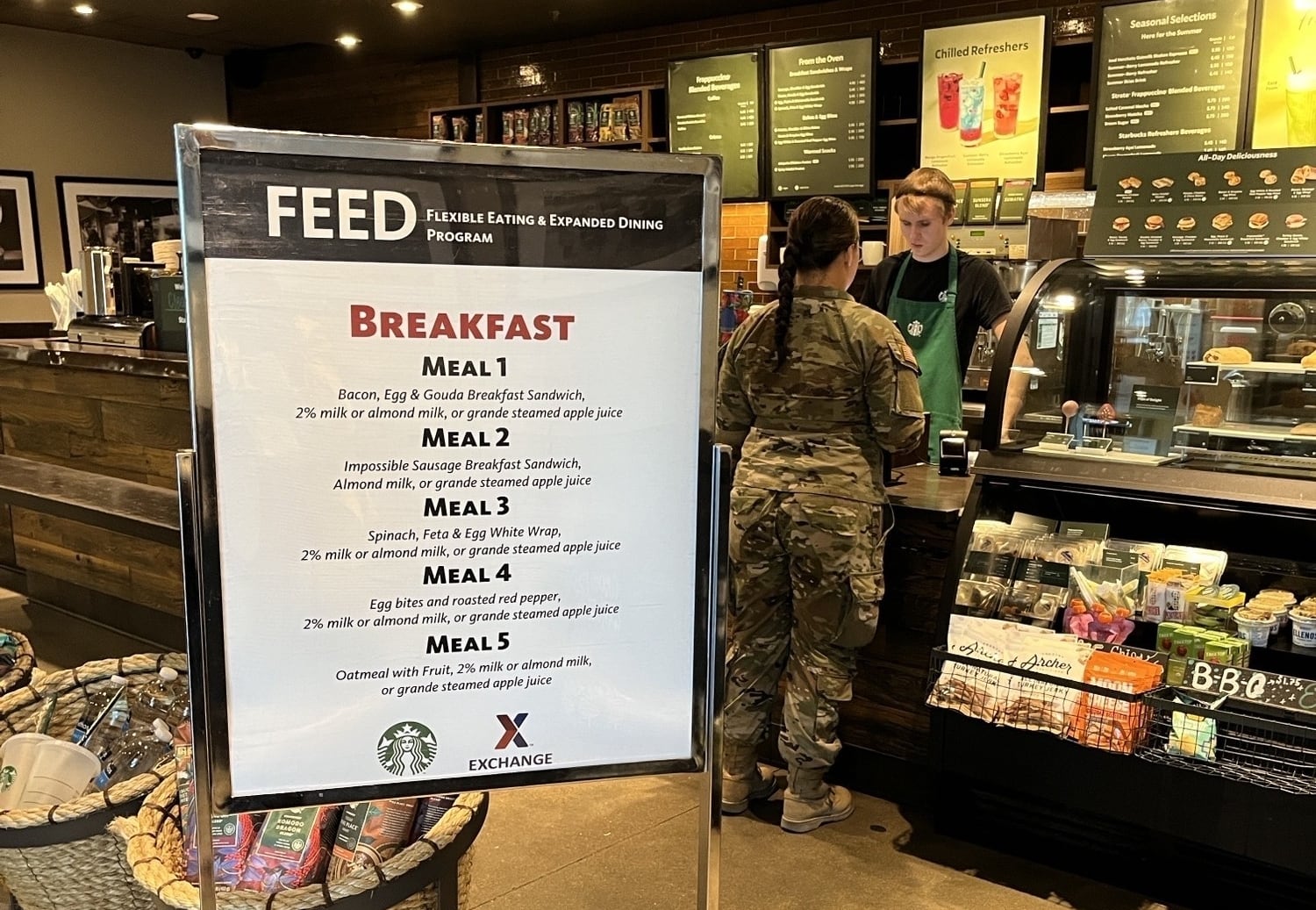NASA has announced the team of 18 astronauts who will spearhead the agency’s efforts to return to the moon by 2024. Among them were 10 active-duty military personnel.
Vice President Mike Pence named the nine men and women who will make up the Artemis program on Wednesday at NASA’s Kennedy Space Center in Florida.
The service members on the Artemis team represent all four branches of service as well as several of the career fields the military has to offer, including test pilots, a submarine officer, a Navy SEAL, and a flight surgeon.

“I give you the heroes who will carry us to the Moon and beyond — the Artemis Generation,” said Pence. “It is amazing to think that the next man and first woman on the Moon are among the names that we just read. The Artemis Team astronauts are the future of American space exploration, and that future is bright.”
Of the team’s nine members who stand a chance at being the first women to walk on the moon, four are actively serving in the military.
“Reflecting on all the incredible women at NASA who came before me… it’s kind of the logical conclusion of all those accomplishments that the next time we go to the moon, a woman will be on that crew,” said Navy Lt. Cmdr. Kayla Barron.
Barron was a member of the first Naval Academy class from which women were allowed to commission into the submarine force. Her time on the ballistic missile submarine Maine encouraged her to become an astronaut.
“The submarine force just really has this culture where the sailors are molding you into the leader they want to work with, and that’s what drew me into that community,” Barron told Military Times. “But it was my experience on the submarine that made me want to and believe that I could become an astronaut.”

When she returned to the Naval Academy for a shore assignment, Barron met an astronaut who compared life on the space station to working and living on a submarine. Intrigued by the interaction, she applied and was accepted to the astronaut program in 2017.
Eight of the other Artemis astronauts are also members of the 2017 class, NASA’s most recent. Nine Artemis astronauts have already flown in space, including Christina Hammock Koch, a member of the 2013 class who holds the record for longest spaceflight by a woman with 328 days in space and six spacewalks. One member of the team, Marine Corps Lt. Col. Nicole Mann, was selected in 2013 but has not yet flown in space.
Military service members on the Artemis team:
• Navy Lt. Cmdr. Kayla Barron
• Air Force Col. Raja Chari
• Navy Lt. Cmdr. Matthew Dominick
• Navy Cmdr. Victor Glover
• Navy Lt. Jonny Kim
• Marine Corps Lt. Col. Nicole Mann
• Army Lt. Col. Anne McClain
• Marine Corps Maj. Jasmin Moghbeli
• Army Lt. Col. Frank Rubio
• Navy Capt. Scott Tingle
Once selected to attend astronaut training, candidates work for two years to become fully qualified.
“The International Space Station is our primary mission right now, so we spend a lot of time learning the systems and procedures for that spacecraft,” said Army Lt. Col. Frank Rubio, also a member of the 2017 class.
For Rubio, a former Black Hawk pilot and flight surgeon with the 10th Special Forces Group, the most difficult part of astronaut training was learning to speak Russian to communicate with cosmonauts on the ISS. Candidates also take classes in medical procedures, robotics, and spacecraft repair.
For some candidates, military training gave them a head start. As a former test pilot, Air Force Col. Raja Chari had already learned to fly the T-38 jets used by NASA for flight training. One of the best parts of being assigned to NASA, according to Chari, is the ability to continue working in a mission-driven and team-oriented environment.
“There’s a lot of people at NASA, very similar to the Air Force, who could make a lot more money doing something else, and they’re here because they believe in the mission,” said Chari.
In the next three to four years, the astronauts will train, test, and design the equipment needed to land and live on the moon for extended periods of time.
Each of the astronauts selected for the Artemis program is at the top of their field and fully committed to the mission of furthering research beyond the planet. Navy Lt. Jonny Kim is perhaps one of the best examples of commitment and excellence in his field.
A former Navy SEAL with more than 100 combat operations and a doctorate of medicine from Harvard Medical School, Kim said that, upon enlisting in the Navy, he didn’t have any plans or goals beyond becoming a naval special warfare operator.
“[Being a SEAL] was certainly a memorable experience because it redefined new limits, gave me new benchmarks on how to judge the rest of my life,” he told Military Times.
During his first deployment to Ramadi in 2006 as a corpsman, Kim recalled having to practice medicine to save the lives of civilians, enemy personnel, and his fellow SEALs. But not being able to do more than stabilize a patient until they could reach a surgeon made him feel helpless.
“So, I saw medicine as a way that I could pivot the same hunger I have for service to a new direction and to be able to help people,” said Kim. It wasn’t until he reached medical school that he began to consider the idea of becoming an astronaut, which he saw as a continuation of his fascination for pushing beyond human limits.

The lieutenant and astronaut expressed gratitude to the military for the opportunities it’s given him and excitement for the opportunity he has to encourage a new generation.
“I would like to thank the military mentors I’ve had along my path and say that if you’re in a position to give to the next generation, to the next set of leaders, through mentorship that I implore you to spend the time to develop those relationships,” said Kim. “Those are the ones that make an organization strong.”
Harm Venhuizen is an editorial intern at Military Times. He is studying political science and philosophy at Calvin University, where he's also in the Army ROTC program.





